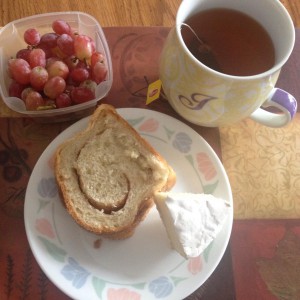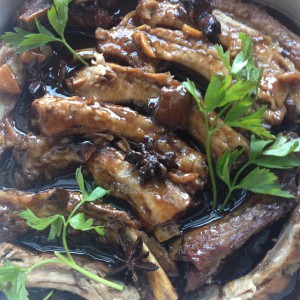The protests down at Ferguson has completely got out of hand. So out of hand that both pro and anti factions have already lost the true meaning of what they are fighting for because of what has already been done and the propagandas that are continuously creating a wedge in between them instead of a mutual ground were people could actually talk and MAKE CHANGES. Scott Olson’s reflections do show a facet of this. Being on the side of the protesters, his photos effectively captures the force inflicted on the civilians, so are the pain and anguish that they go through. Just like in Kent State, Olson’s narrative gives us a look of how abuse feels like, of how intimidating it could be and how difficult it is to overcome. I just feel like his take is a little unfair because the police are people too, who are merely doing their jobs, and are pretty much misrepresented for doing so. I would really like to see more photos geared towards their conditions too, and make a comparison and a valid conclusion.
Author Archives: Jane Michelle Tan
The New American Dustbowl: Documenting California’s Drought
In comparison to FSA photographs, Matt Black captures not only the problem arising in California, but also the effects on the people actually living the drought at this moment. His photos include both the conditions of the terrain and its inhabitants, but of coarse, not forgetting to add a slice of the emotional–photos of seasoned farmers and shepherds looking very anxious about the current state of the water irrigation, a dead tree lying in front of a market looking equally deserted, photos of children trapped in the middle of these difficulties. It is pretty much like the FSA photographs during the Great Depression, which sought to grab the attention of those seemingly unperturbed by the economic catastrophe. Perhaps, the reason why these photos have not achieved its goal to enlighten people is ‘compassion fatigue’, which, in a nutshell, is the lessening of compassion from people because they are so used to seeing similar photos. With the power of smartphones and the efficiency of social media these days, people are quickly updated with different levels of wretchedness, day by day, 24/7, that they can quickly dismiss this problem, knowing that a comparable news story would surface soon. What I do not understand however, is the fact that the government is seemingly not doing anything about this. How come (for a person like me who doesn’t watch the news regularly), that all I hear about these days has something to do with terrorism in a foreign country, when a problem like this in our own soil is looming so largely? Hectares of land are becoming useless and our own people jobless!
Robert Capa and The Greatest War Photograph
Just like anything famous and newsworthy, Robert Capa’s “Falling Soldier” is not immune to any controversy. The photo presents a harrowing moment during war–the precise moment of death of a soldier–and that in itself is that attractive element that perhaps propelled it to become ‘The Greatest War Photograph’ of all time. The shock of capturing death is indeed riveting, especially at that point and time in history, and to expertly do so is genius, and therefore would understandably garner the attention of the critics. I personally feel that Knightley and Gallagher’s allegations are pretty lackluster, missing the backing of a solid, air tight evidence. What also took my attention was Knightley’s pettiness even after being proven wrong. Whelan makes very credible points while defending Capa, on top of enlisting the expertise of a chief homicide detective. Now, given the compelling facts in favor of Capa, doesn’t Knightley realize that with his persistence, he is actually making Capa look even more heroic than he already is?
Rock Star Food Behind the Scenes
Musicians have always been known for their eccentric creative processes, so I wasn’t really surprised to know that it extends even in the realm of food. I can say that Hargreaves did a great job in representing the spreads of the musicians that I know of, like Mariah Carey (The bendy straw, of course. The Champagne was just icing on the cake), Busta Rhymes (Guinness and prophylactics, enough said) and Rihanna and Beyonce (we now know how they maintain those beautiful curves). Some spreads did surprise me though, like Axl Rose’s (White Wonder Bread, what?), Marilyn Manson’s (I was actually surprised to know that he KNEW what Gummi Bears were!) and the Foo Fighters’ (I just laughed at this)–this is not a critic on Hargreaves but more of a revelation to me. This article just proves to me that these Rock Stars that we know of, and claim to know fairly well, are mere mortals too, and these ‘eccentric creative processes’ are their means to get through a tough time, all in a day’s work.
Photography and Special Effects in Early Film
The Moving Picture. That is the first thing that came to my mind when I began thinking about a response to this thread. One can say that film making is an offshoot of photography, as its tools (a ‘documenting apparatus’) are pretty much similar to photography; its just the products that differed–the former a moving art form, while the latter, a still one. I find that early film making exude that same stiffness and/or clumsiness that subjects of early photography did, which is pretty understandable, as the art form is still in its nascent stage. Another similarity of the two is the limited perspective captured by the camera, (‘limited’, meaning that it may only show one perspective or, as in Le Voyage dans La Lune, some scenes show most of the characters in the periphery because of the limited scope of the camera lens) which, now in contemporary times, is resolved by using several, each one pointed to shoot a different angle.
Documenting Spiritualism
In my opinion, for spiritualism to be documented effectively, a very abstract component must be lured out of one’s viewer–faith. A viewer doesn’t have to share the photographer’s religious denomination to appreciate the work; a viewer only has to have a smidgen of understanding, that openness of the mind. Without it, the viewer would not ‘see’ anything at all, no matter how skillful the photographer is or how convincing the image turned out to be.
For me, personally, I believe that spiritual documentation is possible. Although not a very religious person myself, I simply think that anything is possible in this world. In this case, however, a photographer must be fully immersed into the subject: He or she has to believe it. For it being valuable, sure, for any type of evidence towards its accreditation (or otherwise) must be kept and accounted for. It’s like graffiti, once rejected for its impetuous and rebellious nature, but is now considered an art form; spiritual documentation can be the same: it might not receive a great deal of following right now, but people would eventually see how its uniqueness can be translated to creativeness. And then, again, one doesn’t have to believe in its validity for it to be considered beautiful.
Intrusive? Yes, for the camera being present is like a perpetual intruder. I feel that it undermines the sanctity of the supernatural, and with popularity of image editors out there, a non-believer could easily discredit a photograph by referring to these software. Ultimately, manifestations must be experienced to be called true. A photograph is merely a medium to speak of its existence, and it is only up to the viewer to believe it or not.
Subway Portraits
Although I am not completely acquainted with the most popular approaches on photography back in Evans’ time, I feel that his technique makes the subjects look truly unaffected and real. You can see this through the effortlessness of the shots–subjects looking wary or being unfocused or even not looking at all. Others have no idea that they are being photographed, thus simply doing what they normally do, from reading the newspaper to snoozing or biting one’s lip in deep thought. I really find this fascinating (the ability to capture a subject’s inner unfiltered emotions), because I believe that capturing such moments take a certain dexterity and timing that cannot be replicated all over and over again. For some reason, it reminds me of Southworth and Hawes, as they are famous for drawing out the personalities of their subjects. However, in contrast to them, Evans was able to do such an undertaking without the fluff of props and, rather, by just taking in whatever is available at the moment. As for similarities to today’s riders, I would say that there would be instances when riders would also exude the same facial reactions as Evans’ subjects. For example, if taken at the right moment, without the camera being seen, such artlessness can be captured from today’s riders. Unfortunately, today’s riders are very acquainted with the camera (and it’s various forms), so some photos might feature subjects deliberately posing or altering their reactions.
Picturing Breakfast
I have always been taught that breakfast is the most important meal in a day. This is because it’s the meal that gets you through the morning hours until lunch, which, in turn, gets you through a few more hours until a quick snack time, before finally arriving home for a nice dinner with the family. Being raised in the Philippines, I have been accustomed to heavy breakfast sets that usually included fried garlic rice (called sinangag), a sunny-side egg and a choice of meat, typically a serving of cured sausage (longanisa), beef (tapa) or salted fish (tuyo), or for a more urbanized version, a choice between hotdogs or corned beef. It’s already a lot, but often times, these meals are concluded with a serving of fruit. And then a mandatory glass of milk or juice. No wonder my Mom lets us walk to school.
So imagine my wonder when I found out about American breakfasts. Cereal, for one. Or perhaps two slices of toasted bread with jam. Or the very convenient protein shake. It’s very minimal, but frequently covers a good chunk of a day’s required nutrient intake. Fruits have become a good staple, and the variety seemed endless due to New York having four seasons instead of Manila’s two. I wouldn’t say that American breakfasts are unhealthy or lacking, but perhaps it can amount to that if one doesn’t choose carefully from the large spread of choices accessible out there.
In my opinion, a breakfast should be nutritious and filling. It should cover the basic food groups without being too heavy that it turns one to be lethargic. A serving of fruit or vegetable is a must, as I find these to be very helpful in keeping me up and filled without that sluggish feeling. As for liquids, milk and 100% juices for kids, and teas for adults. I find that coffee is habit forming, so as much as possible, I stay away from it.
Why Does It Look Delish?
What are the qualities that communicate deliciousness? In my opinion, this question is best answered through one’s stomach AND one’s mind. While looking at this photo of Baby Back Ribs in Sweet Vinegar Sauce, the first thing that catches my attention is how the light seemingly accentuates the sweet glaze bathing over and around the ribs. From the top, one can see how each rib is deliciously highlighted to give a sense of the meat’s tenderness and juiciness, and (quite possibly too) how satisfying it would feel inside one’s mouth and then, later on, one’s belly. The star anise and garlic, spread all across the plate, adds to it’s olfactory profile, hinting at it’s oriental and savory fragrance, encouraging images of satiation and enjoyment, or, simply, a sudden craving for a bowl of steaming jasmine rice. On the other hand, the pops of green brought about by fresh parsley, gives a nice contrast to the earthy tones of the dish, making it whole, hearty and definitely appetizing.
Taking Pictures of Food
This picture that I’ve posted is the first photo that I’ve taken to kickstart a series of foods that I’ve personally made in preparation for my trip to France in 2015. I envisioned the project to be a “before and after France” compare and contrast, to identify improvements in selection, taste and artistry in my food. Ambitious, one might say. I completely agree. But what I wasn’t prepared for was the difficulty of producing said photos! I didn’t realize how complicated the task really was: on top of making the food, there is the consideration for getting the right angle, light, quantity, plating…the list goes on!
Although having said such, I would have to agree with Tucker Shaw (the food critic for the Denver Post) when he said that food can evoke unique memories and emotions that no other medium can. I swear that for each food photo that I’ve posted, I can still remember those moments while preparing the meal, right to the last moment when the food was consumed; all happy times! Sharing these photos does give one a sense of connectedness, not only because food conveys a joyful language that everyone can understand, but also because it reveals something personal about the blogger that anyone willing can appreciate.






